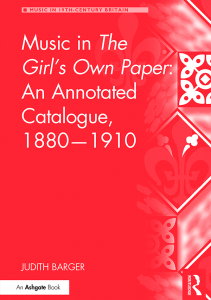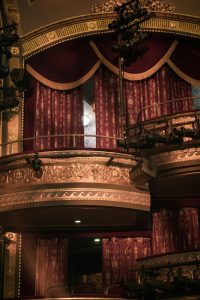Organ Benches and Bicycle Seats:
Pedalists in Victorian England
Part 2 Bicycle Seats
As the nineteenth century progressed, English women benefited from increasingly liberal social attitudes about their education, physical exercise and meaningful employment outside the home. For example, fashions in vogue that squeezed women in with tightly laced corsets and weighed them down with heavy petticoats gradually gave way to less restrictive clothing to accommodate a more physically active lifestyle. John Steward Mill, a strong advocate for equal opportunities for women in all areas, including music, had admonished society for its myopic view in 1869. It was presumptuous of anyone to decide what women could or could not do, based on the unnatural state to which society had confined them, Mill believed. Left to choose their direction as freely as men, women likely would show little or no difference in their capabilities from that of men. 1
The bicycle validated Mill’s claim. Writing about cycling in the 1890s, David Rubenstein notes that the introduction of the safety bicycle in 1889 with its chain-driven rear wheel and pneumatic tires set England rolling and started the bicycle craze. 2 By 1895 popularity had become passion. Everyone – male and female – who could afford a bicycle and was physically able took to England’s streets and byways. The revolution of bicycle wheels in a sense effected a social revolution.
And no more so than in the lives of women riders for whom the bicycle opened up a new world with three immediate benefits, which Rubenstein discusses. First came improved health and physique from participation in this active recreation. Second was the blow that bicycles dealt to the system of chaperonage as young women on cycles were able to outride their chaperons, giving them more social freedom. And third, the act of so many women cycling symbolised the defeat of conservative opinions. 3 For women — who took to cycling even more avidly than men – the bicycle represented a new sense of independence and self-reliance and challenged the restraints of convention, in however a limited way. 4
The bicycle craze had repercussions in the world of music. Composers took advantage of the bicycle’s immense popularity, and inventors were quick to exploit the link between cycling and music. In an 1881 review of The Bicycle Sonata for pianoforte, the Musical Times doubted that a B-flat major chord could really suggest ‘Mind the ditch’ or a sixteenth-note arpeggio, a collision. 5 One wonders whether the winner of a twenty-guinea prize offered by Puck for the best musical setting of a National Cycling Song or the composer of the part song The Cyclists fared any better. 6 Musical bicycles were the latest novelty to catch the attention of the Musical Times. The Melocipede offered waltzes as traveling music, while the Troubadour bicycle performed popular airs for its rider and bystanders alike. 7
The effect of the bicycle on women’s patronage of music was of some concern to the musical press. The anticipated absence of this important source of support led the Musical Times to quip in 1896, ‘A Ladies’ Committee has been formed in connection with the approaching Bristol Festival. Are there enough ladies free from the “bike” craze to guarantee a quorum?’ 8 Furthermore, the same journal heard that London’s 1896 spring concert season had suffered from the ‘cult of the cycle’, because it lured away concertgoers, nine-tenths of them women. 9
Inevitably, bicycling impinged on the time women spent at the keyboard. The bicycle’s lure away from the piano grievously troubled the Musical Times, which, in 1896, identified the bicycle as ‘a new and most formidable enemy of the pianoforte’ because of the thousands of young women who now spent their leisure hours on the bicycle seat instead of on the music stool. 10
The bicycle was no enemy to women organists, however. In fact, their performance on the pedals of this ‘iron bird’ may have aided their acceptance as organ recitalists and organ pedalists. Writing of women as musicians in 1885, the Monthly Musical Record had commented:
When we become accustomed to a thing it soon ceases to excite either wonder or satire. It is but a short time ago that people laughed at the idea of a lady violinist. There is the organ also. At one time it was considered unladylike to play it. But there must surely be less to remark upon in a lady playing the organ than in turning the levers of a tricycle, as we may see them doing constantly in the streets. 11
It was not only that women were becoming stronger, thanks to their increased participation in active recreation, but also that organs were becoming less taxing to play, thanks to the introduction of innovative labour-saving devices, that worked to the advantage of women organists. Yet concern about the potentially harmful effects of organ playing – especially pedaling – on woman’s delicate constitution lingered in the minds of some men despite growing evidence to the contrary. In 1863 a male correspondent to the Musical Standard with the pseudonym Pedals doubted that female organists had the necessary strength to play the ‘Hailstone Chorus’ from Handel’s oratorio Israel in Egypt on a large organ without breaking down ‘from sheer exhaustion, long before the final chord’. 12
Thirty years later a correspondent who signed herself Lady Organist was told in The Girl’s Own Paper, a popular weekly magazine published by the Religious Tract Society: ‘Organ-playing is not considered advisable for women. Strong, unmarried, middle-aged women may play the foot-keys without suffering from the unsuitable strain on the back and loins; but it is a risk if the instrument be a large one.’ 13 Correspondents Iresene, Cecil Burn and Rob Roy – all likely pseudonyms – each had been given similar answers in the magazine in the 1880s. It appeared that only spinsters should play the organ.
The activity may have looked strenuous, but the magazine’s answer must not have satisfied its readers to whom physical activity was becoming more common, for they continued to ask the same question. In 1896 on a page of ‘Replies to Often-asked Questions’, the answer given by The Girl’s Own Paper to ‘Is Organ-playing bad for Girls?’ signaled a victory for new female recruits to the organ bench in Victorian England: ‘Organ playing is not injurious to either sex, indeed it is a healthy though fatiguing occupation. It exercises the muscles of the hands and renders them delicate and precise. The movements of the legs in working the pedals are natural ones, being almost identical to those of walking.’ 14
Or perhaps as natural as riding a bicycle.
Notes
1 John Stuart Mill, The Subjection of Women [1869] (London: Dent, 1896), 273.
2 David Rubenstein, ‘Cycling in the 1890s’, Victorian Studies 21 (1977): 48–49.
3 Ibid., 61–62.
4 Ibid., 59.
5 Review of The Bicycle Sonata, composed by Stanislaus Elliott, Musical Times 22 (1 Aug 1881): 424–25.
6 ‘Twenty Guinea Prize’, Musical Times 31 (1 Jul 1890): 433; ‘The Cyclists’, Musical Times 37 (1 Oct 1896): 711.
7 ‘According to a Baltimore company’, Musical Times 29 (1 Jan 1888): 20; ‘The “Troubadour” bicycle’, Musical Times 37 (1 Aug 1896): 527.
8 ‘A Ladies’ Committee’, Musical Times 37 (1 Aug 1896): 527.
9 ‘The Spring Concert season’, Musical Times 37 (1 Aug 1896): 525.
10 ‘The Pianoforte and Its Enemies’, Musical Times 37 (1 May 1896): 309.
11 Joseph Verey, ‘Women as Musicians’, Monthly Musical Record 15 (1885): 196.
12 Pedals, ‘Pedals’ Reply’, Musical Standard o.s. 1 (15 May 1863): 287.
13 ‘Lady Organist’, The Girl’s Own Paper 15 (4 Nov 1893): 80.
14 ‘Replies to Often-asked Questions’, The Girl’s Own Paper 17 (5 May 1896): 512.



